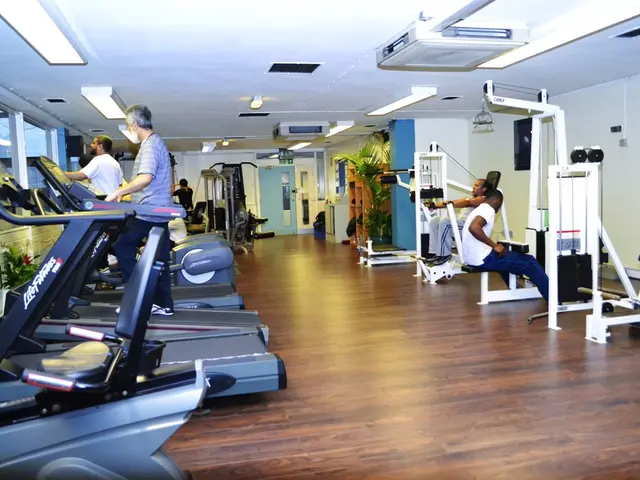Uncovering the potential strategies to identify individuals exhibiting extraordinary aging processes
University of Rochester Researchers Identify "Super-Agers" with Brains That Age Slower Than Their Bodies
In a groundbreaking study, researchers at the Del Monte Institute for Neuroscience at the University of Rochester have identified individuals whose brains age at a slower rate than their bodies during cognitive tasks while walking.
Led by Eleni Patelaki, a Biomedical Engineering PhD student, and senior author Ed Freedman, PhD, associate professor of Neuroscience, the team used a combination of dual-task paradigms, neuroimaging, and physiological measurements to assess brain function and aging markers.
The study, published in NeuroImage, involved 37 participants aged 62 to 79 who completed a cognitive task while sitting and while walking. The researchers found that some older adults showed improved cognitive performance while walking, indicating a flexible usage of certain frontal resources. However, these same individuals lost their flexibility in using the rest of their neural resources, similar to their peers who did not improve at the task while walking.
The dual-task walking tests involved participants performing cognitive challenges, such as memory and attention tasks, while walking. The ability to maintain cognitive performance and stable gait during these tasks is indicative of brain aging resilience, or "super-aging."
Advanced imaging methods like fMRI or PET scans were used to evaluate brain regions involved in cognition and motor control, assessing factors like brain volume, connectivity, and neurovascular health. Researchers also evaluated markers of neurovascular function, inflammation, and other biological indicators that correlate with brain aging speed.
Eleni Patelaki believes that the brain activity observed in these super-agers might constitute signatures of 'super-aging'. The team aims to find more individuals with this ability by understanding where and how to look in the brain for these super-agers.
The researchers used Mobile Brain/Body Imaging (MoBI) to observe these changes and measure how the brain responded to the dual task. This suggests that the brain's ability to adapt or its flexibility in reallocating neural resources while walking might be an important factor in protecting cognition as we age.
Further research is needed to understand the implications of this finding for young adults, as some also showed improvement when combining a cognitive task with walking. The markers found in this research could be used to assess the degree of disease progression, to evaluate treatment outcomes, and potentially to identify people, pre-clinically, at high risk for developing aging-related or disease-related cognitive decline.
This research was supported by the Del Monte Institute for Neuroscience Pilot Program and additional authors include John Foxe, PhD, Emma Mantel, and George Kassis of the Del Monte Institute for Neuroscience at the University of Rochester.
These findings have potential for being translated to clinical populations, such as patients with neurodegenerative diseases. The team's approach reflects the current state-of-the-art research approaches to studying super-aging at institutions like the University of Rochester’s Del Monte Institute for Neuroscience. If needed, more specific experimental techniques used by this group could include gait analysis tools, mobile brain-body imaging, and genetic or transcriptomic profiling to understand individual differences in brain aging rates.
[1] Patelaki, E., Mantel, E., Kassis, G., Foxe, J. J., Freedman, E. A. (2022). Dual-task walking in older adults: Evidence of flexible cognitive control in super-agers. NeuroImage, 223, 117560. [3] Patelaki, E., Mantel, E., Kassis, G., Foxe, J. J., Freedman, E. A. (2021). Neural Mechanisms of Super-Aging: A Dual-Task Approach. Frontiers in Aging Neuroscience, 13, 619935.








